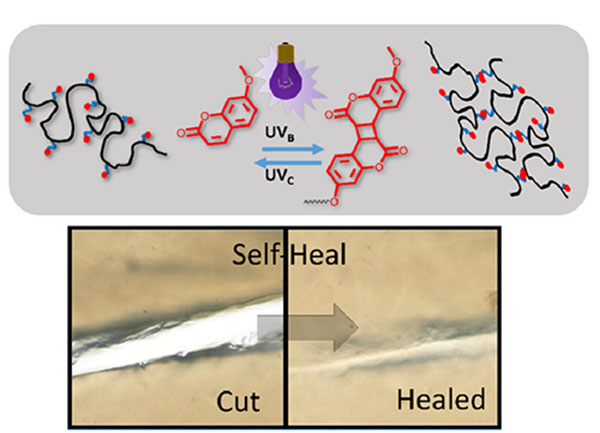Researchers from the Institute of Nano Science & Technology (INST), Mohali, an autonomous institute under Department of Science and Technology (DST), have designed a synthetic polymer that can mend its own cracks when exposed to ultraviolet light.
The polymer can be used as a smart coating for photovoltaic devices to prevent damages, thereby increasing the performances of such devices. The research supported by DST-SERB has been published in the journal Soft Matter.
The low temperature mending synthetic polymer designed by the research team led by Dr. Asish Pal from INST undergoes photo-crosslinking (photo-induced formation of a covalent bond between two macromolecules), upon UVB light exposure. This results in making the otherwise flexible polymeric network rigid enough to tune the glass transition temperature. Any crack formation on the polymer-coated surface then can be repaired by UVc light irradiation that renders consequent photo-decrosslinking (photo-induced destruction of a covalent bond) mediated low glass transition temperature Tg polymers.
The approach employs interesting photo-responsive healing that mends damages in specific local sports at ambient conditions, unlike many other self-healing systems that require a higher temperature and are rather challenging to operate within a specific local area.
Nature has an uncanny ability to produce intelligent self-repairing biomaterials that get actively engaged in natural processes like blood clotting, tissue regeneration, and so on. Hence, the design of smart and adaptable stimuli-responsive systems in nanoscience owes its fascination in making self-healing materials that autonomically mend in situ at the microscopic level as a response to macroscopic damages. Such materials are potentially envisaged as sustainable and long-lasting materials for applications in electronics, energy, transportation, and coatings.
The approach of the photo-modulated self-healing system demonstrates both inherent and stimuli-responsive self-healing pathways and finds its application in designing smart coating of photovoltaic devices to prevent damages thereby, increasing the performances of the devices for a longer time.































